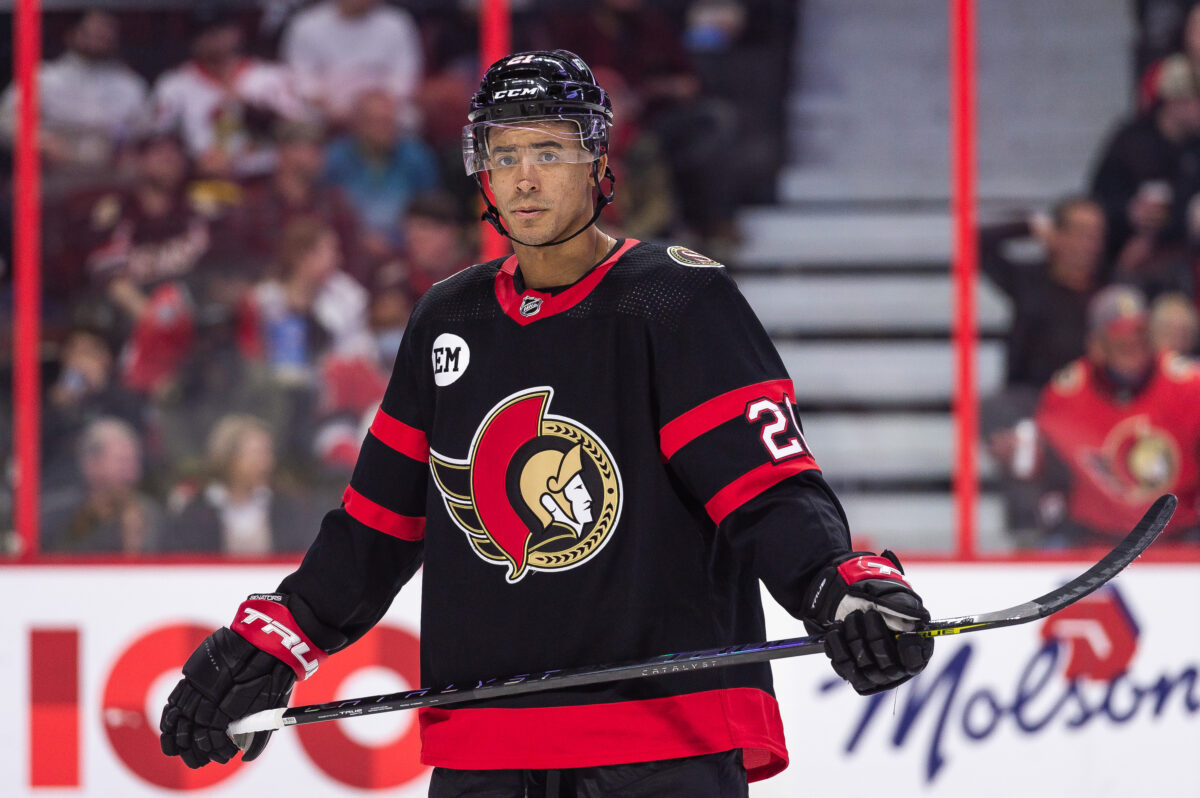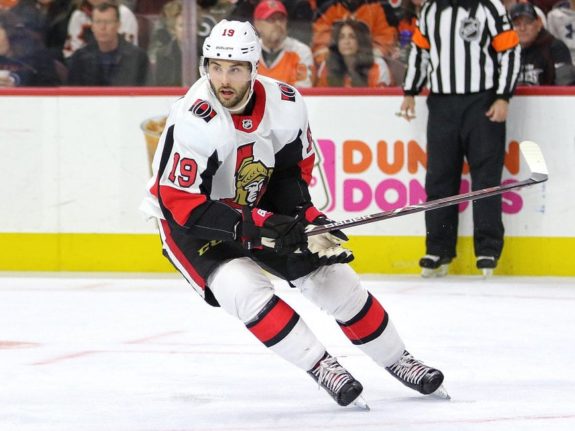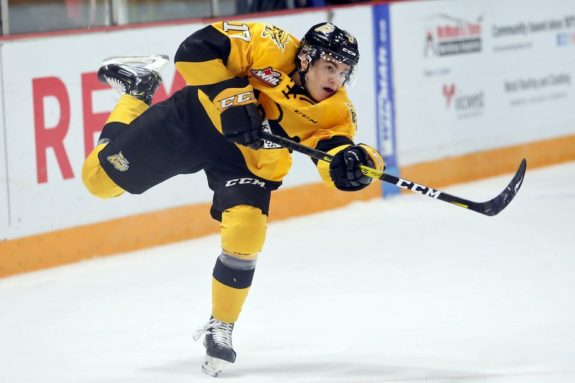As reported on Wednesday, Ottawa Senators center Josh Norris is now expected to be out for at least three months based on his follow-up exam. After leaving the game against the Arizona Coyotes, fans feared the worst, but he was expected to be out for a couple of weeks. Now, the team is facing a long stretch without their number two center and a key component of their power play. The current lineup has good depth, and there’s certainly an ability to shift players around. While losing Norris is a concern, the team does have internal options to handle the spot while he recovers. Here are just a few of the options.
Option 1: Giroux to Center
The Senators could get around this situation by moving the recently acquired Claude Giroux off the wing and into the dot. There are few players around the league more experienced than Giroux, so it would barely be a blip on his radar. His history of strong two-way play and the incredible way he continues to produce points makes it the easiest move. The question then is, who jumps onto the wing?

Mathieu Joseph is the easy answer. He has the speed to run plays with Alex DeBrincat and a relatively high hockey IQ. Before the offseason moves, some even speculated that he could play his way up to the second line based on his run at the end of the 2021-22 season. While his start has been slower than expected in terms of offensive production, he’s been a steady, solid presence for the third line. His play is part of what has allowed Shane Pinto to explode, scoring five goals in five games to start the year.
Option 2: Promote Shane Pinto
Possibly the biggest fan request on social media right now is to promote the aforementioned Pinto to the second line. He’s been nothing short of incredible through the preseason and first six games of the regular season. While it’s early, playing at a point-per-game pace in the regular season is not an easy feat, and even more so for someone centering the third line in what is, essentially, their first real season. While an injury kept him down last season, he’s shown no developmental impact and has been ready to play.
Related: Norris Injury Could Stall Senators’ Momentum
With the third line being a consistent performer for head coach DJ Smith, he may not want to break them up. Tyler Motte has done well with his new teammates, but it’s Pinto who has been the primary scoring threat, while Motte and Joseph disrupt play and generate chances for Pinto to score. If Pinto moves up to the second line, this delicate ecosystem could get disrupted. Mark Kastelic has been a delightful surprise since getting the fourth-line role, and Smith’s consistently been matching them as a shutdown line against other teams’ top performers. Moving him to third takes away a ton of the Senators’ fourth-line prowess. As the old adage says, if it’s not broken, don’t fix it.
Option 3: Brassard’s Time to Shine
Derick Brassard. Ottawa’s forsaken son — maligned after the Mika Zibanejad trade, only to hammer opposing teams in a playoff run, thus sealing his fate as something of a fan favourite. Returning to his hometown on a one-year deal, Brassard’s first time checking into the lineup was to replace Norris’ first absence. Smith wasted no time throwing Brassard directly onto the second line and including him on the power play. He hit the ice running, spending time in all situations for the Senators, and he capped off his night by scoring his first goal of the season.

While he’s a little bit older, Brassard has shown he can still play well. Would he be a second-line center on most teams? Probably not. But given that the Senators have already shown they are committed to rolling four lines that can do damage, having a lone player punching above their weight class doesn’t sink the ship in the slightest. With Giroux’s playmaking ability and DeBrincat’s lethal scoring threat, the only pressure on Brassard is to be smart defensively and forecheck intelligently, both things he’s proven to be more than capable of.
Option 4: Who’s Ready in the Prospect Pipeline?
The Senators have done a tidy job putting this team on the ice without sacrificing key prospects. There are a couple of natural centers that are approaching the point where they can make the jump into the league. Ridly Greig is likely the closest, but he’s not without risks. He was solid in the Western Hockey League (WHL) but hasn’t played much professional hockey in the AHL yet. Coming off his own shoulder injury suffered at the World Junior Championships, Greig’s success has come from being an all-out wrecking ball. Not big by NHL standards, he plays the game like he’s 6-foot-5, 250 lbs, laying monstrous hits, protecting teammates, and engaging in every possible situation in the game. As the season progresses, whether it’s now or later, he’s the most likely to get the call-up.

The team could also be loading up with Viktor Lodin. The former Swedish Hockey League player checked in for one game last year with the team and will be in Belleville with their AHL affiliate this season. Lodin played well overseas but hasn’t quite adapted in North America yet. His game needs some refinement, but he could prove to be a selection over Greig simply because of the injury concerns. Lodin is full of skill with the puck but can struggle without it. That skill, however, hasn’t turned into major scoring yet. Finding those points will be even tougher in the NHL, but if the Senators want to shift players, he could slide into the third line. Given the play of Joseph and Motte, Lodin would have more opportunities to try and convert, but at some point, if it’s just not working, he’ll be out of luck.
The Senators are at a critical moment right now. They’re on the upswing, and they’ve lost a key player. It could be tempting to make a move for an immediate fix, but other teams know the situation is not good and will certainly jack their asking prices up. Right now, the depth is such that they’ll have an incredibly strong roster under contract and ready to compete within three years. The Senators can’t and don’t need to risk their future for an immediate patch. There are a number of depth options available to the team internally. If the team is serious about being competitive, this is the first moment to prove it.